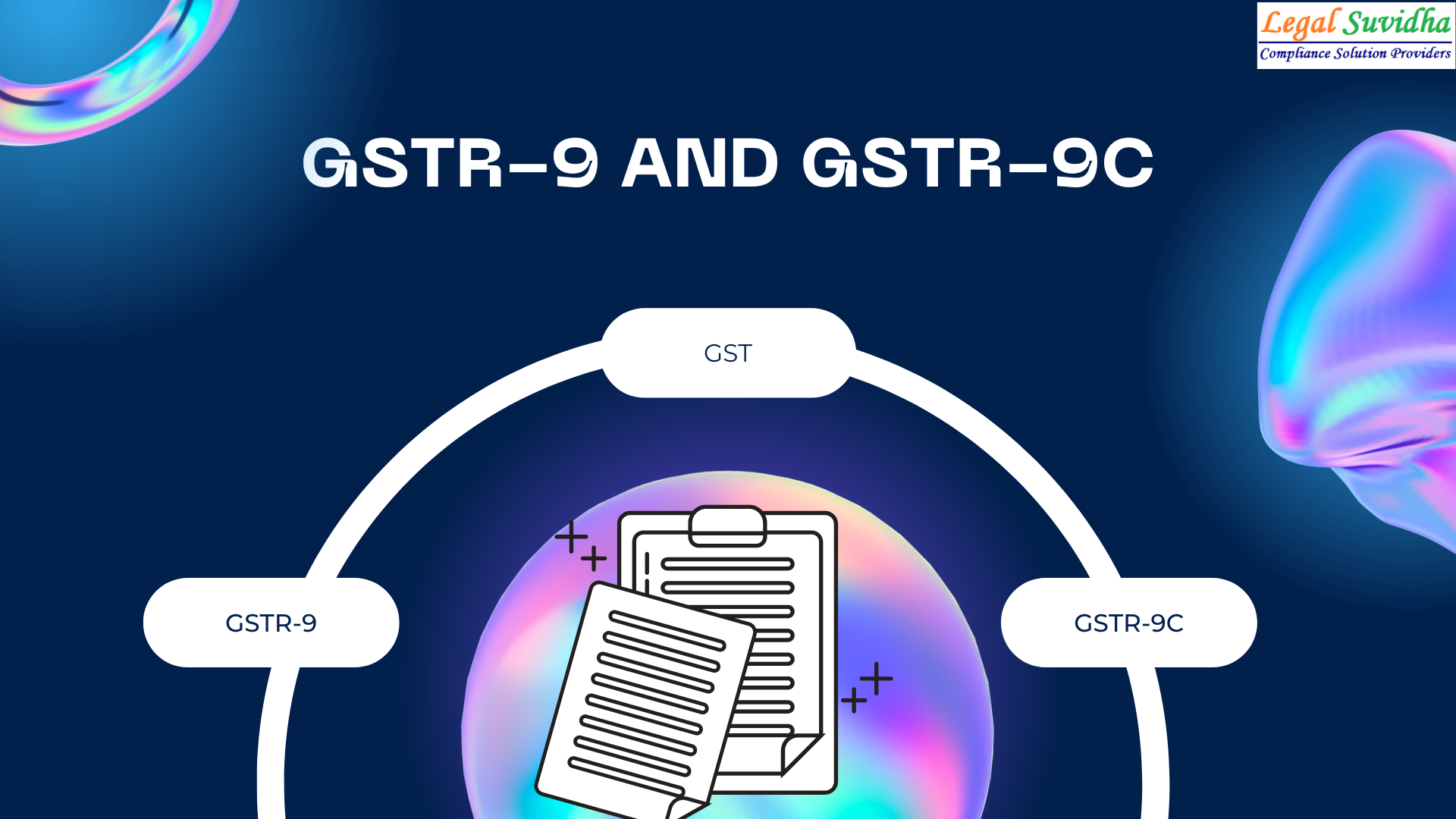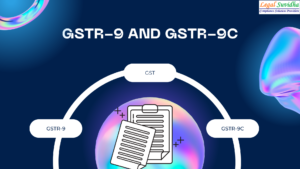CLARIFICATIONS ON FILING GSTR-9 AND GSTR-9C FOR THR F.Y 2021
GSTR-9C RECONCILIATION STATEMENT
What is GSTR-9C?
GSTR-9C is a form that is required to be filed by certain taxpayers under the goods and services tax (GST) in India. It is a reconciliation statement that compares the values declared in the annual return (GSTR-9) with the audited financial statements of the taxpayer for the same period.
Importance of GSTR-9C:
a. Transparency:
Filing GSTR-9C helps to provide transparency in the GST system by allowing the GST authorities to verify the accuracy of the values declared in the annual return.
b. Avoid penalties and legal consequences
Filing GSTR-9C is a legal requirement for certain taxpayers, and failure to do so can result in penalties and other legal consequences. Therefore, it is important for taxpayers to file GSTR-9C accurately and on time to avoid any potential issues.
c. Improves record-keeping :
Filing GSTR-9C helps taxpayers to maintain accurate records of their GST transactions and helps to ensure that they are able to provide accurate and complete information to the GST authorities when required.
d. Helps to build trust with the GST authorities
By filing GSTR-9C accurately and on time, taxpayers can demonstrate their commitment to compliance and help to build trust with the GST authorities. This can be beneficial in the long run and may make it easier for taxpayers to resolve any issues that may arise.
Who is Required To File GSTR 9C?
The GSTR-9C form is required to be filed by taxpayers who are required to get their accounts audited under the Income Tax Act, 1961, and have a turnover of more than 5 crore rupees in the previous financial year.
Points to be Noted While GSTR 9 & 9C Filing for FY 2021-22
- The assessee would not require to file the yearly return in FORM GSTR-9/9A for FY 2021-22 if their aggregate yearly turnover is up to Rs. 2 crores. (If 9 and 9C are not required)
- According to table 4, the liability should acknowledge as a final liability (as per books) no matter what the liability disclosed in GSTR 3B + Form DRC-03 during the FY is.
- In various places, it has been cited as ‘April – September’, but the same should be read as ‘April-November’ treating the current postponement of timelines vides NN 18/2022-CT.
- Via Form-DRC 03 the payment is to be made. Using the ITC under CGST rules would be restricted but the same could be disputed as per the interpretation that came from section 49(4) r/w Rule 86(2). Further, the GST portal permits the same Input tax credit usage.
Latest Changes in GSTR 9C Form (Reconciliation Statements)
There are no revisions in the relaxation furnished:
- Table 5B – 5N – Can regard all turnover corresponding adjustments in Table 5O
- Table 12B & 12C – Optional to fill this ITC information.
- Table 14 – Optional to fill expense-wise ITC claim information.
Note-1: Pre-requirement to 9&9C – all GSTR 1 & GSTR 3B for FY 2021-22 should be filed.
Note-2: From FY 2020-21 GSTR 9C would not be required to get signed via CA/CMA and would be acknowledged as an assessee furnished the form on its own. Hence, Part B (Auditor Certification) and Management Representation Letter does not need.
Note-3: Form GSTR-9 and Form GSTR-9C – once filed could not get amended.
GSTR 9 Annual Return
What is GSTR 9?
The annual return GSTR 9 is a summary of the taxpayer’s monthly/ quarterly returns (GSTR 1, GSTR 2A, GSTR 3B). For taxpayers whose annual aggregate turnover exceeds ₹ 2 Cr. it is mandatory to attach an annual audit report along with the annual return GSTR 9.
Components of GSTR-09 are:
- Details of advances, inward and outward supplies on which tax is payable as declared in returns like Supplies made to unregistered persons (B2C) persons (B2C), Zero rated supply (Export), etc.
- Details of Outward supplies on which tax is not payable as declared in returns filed during the financial year.
- Details of ITC as declared in returns filed during the financial year.
- Details of ITC are availed, as declared in returns filed during the financial year.
- Details of ITC Reversed and Ineligible ITC as declared in returns filed during the financial year.
- Details of tax paid as declared in returns filed during the financial year.
- Particulars of Demands and Refunds
Note that a taxable person with the same Income Tax PAN but multiple GSTINs has to furnish separate annual returns and annual audit reports in GSTR 9 and GSTR 9C for each GSTIN.
What is the Applicability of GSTR 9?
It is mandatory for all taxpayers registered under GST to file GSTR 9 annual returns. However, there are some exceptions, as mentioned below,
- Input Service Distributors
- Taxpayers opting for Composition Scheme
- Casual Taxable Person
- Non-resident Taxable Persons
- Persons paying TDS under Section 51 or TCS under Section 52
- Persons supplying OIDAR services from out of India to a person in India
Table 8C Versus 13 in Form GSTR 9
The reason for the differences in – Table 13 comprises the GST Input tax credit ITC on the imports and inward supplies responsible for the reverse charge that should not be shown in 8C. Indeed the goods or services in transit are required to be shown in table 8C but not in table 13. (those invoiced earlier, however, the goods/services obtained in the following tax period)
GSTR 9 Credit Note Disclosures
The wording in table 4 of GSTR 9 is not clear since the heading is transactions for the year while CN seeks against invoices mentioned before the discussion directed to the interpretation in which CNs would seek in the subsequent fiscal year in the stipulated duration can be acknowledged. CNs increases in the subsequent fiscal years should be shown in the mentioned duration as the same does not pose a transaction of the former financial year.
GSTR 9C Table 7E Versus 9
It is not a mandated reconciliation the same shall verify the taxable value under the books as per the rate that matches the taxable values as reconciled in the former tables. You must confirm that table 9 of the GSTR 9C would get furnished under the books whatever the disclosure in the GSTR 3B or GSTR







